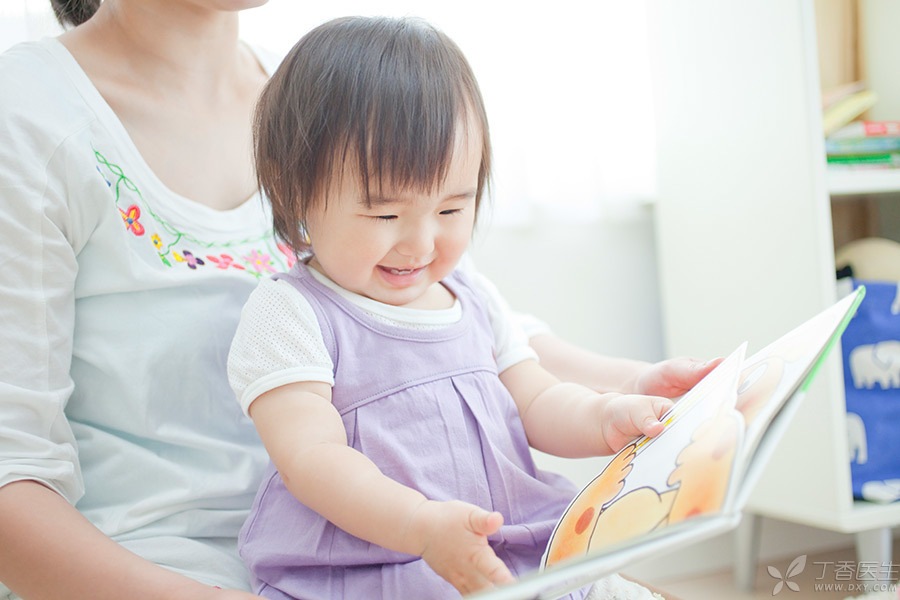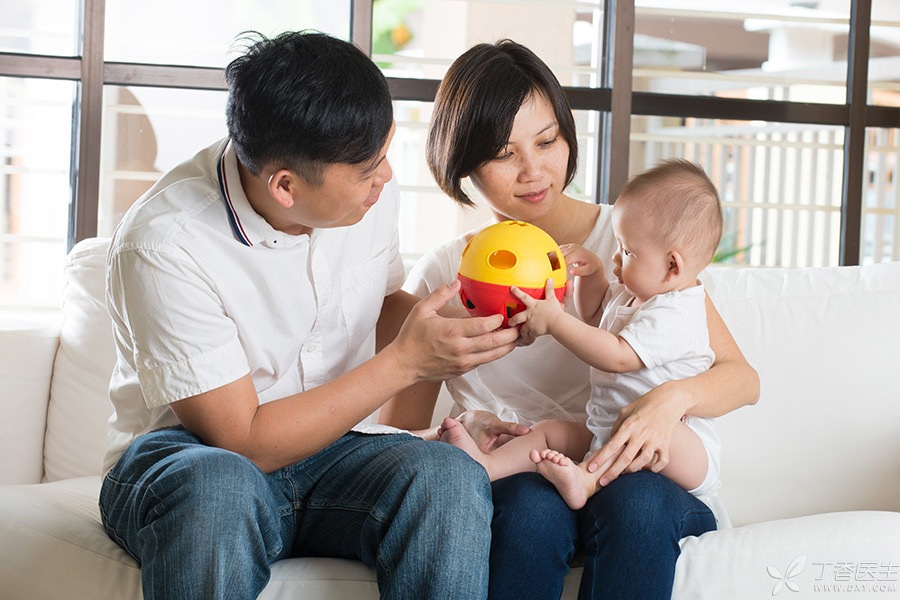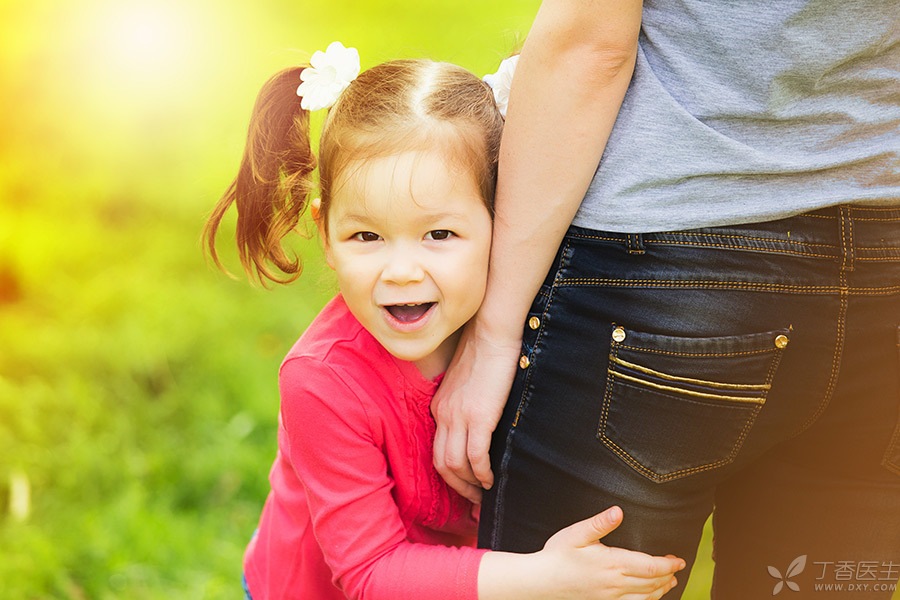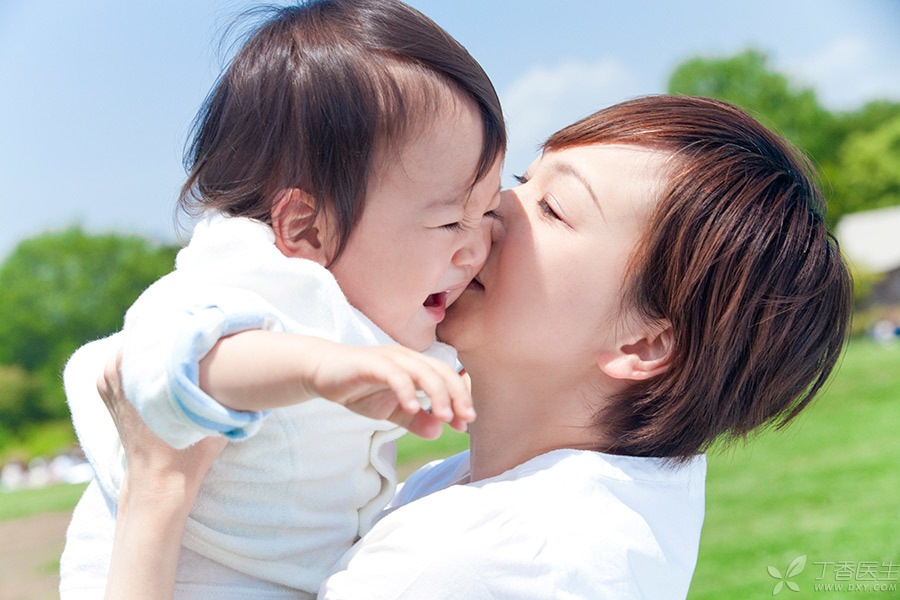
Many parents are big because their children bully or are bullied. They are caught between other people’s accusations and their children’s grievances every day and do not know what to do.
Most of these problems are caused by children’s lack of self-control and self-confidence.
Today, Dr. Clove invited Director Chang Run to tell us how to cultivate children’s self-control and self-confidence.
Help Children Cultivate Self-control
Children with good self-control will not bully others because they can abide by the rules, understand and respect others’ bottom line. To help children cultivate self-control, parents can start from the following aspects.
1. For children aged 0-1,
Timely response
In the first year of a child’s birth, parents can identify and respond to the needs of the child in a timely manner, which is the basis for the development of self-control.
If he can get timely comfort every time he cries, the child’s brain nerves will establish a circuit to relieve anxiety and calm emotions, which is extremely important for him to learn self-control and self-comfort in the future.
Stay calm
In the face of children’s frequent crying, it is especially important for parents to keep calm.
If the parent breaks down or loses his temper first, the child receives the message that the world he lives in is full of uneasiness and crisis and needs to make a stressful response at any time.
Therefore, it is more difficult for children to calm down and comfort themselves when things happen.

Provide just the right help
As a new parent, it is easy to become a “baby protector”. In fact, sometimes we only need to provide a little help, and children can solve problems by themselves.
For example, when he is sad, put the attachment items (beloved plush toys, small blankets) within his reach, or put the pacifier on the clothes, the child will have the opportunity to get what he needs by himself, from [being comforted by you] to [learning to comfort himself with your support].
2. For children aged 8 months to 3 years old,
Reading Emotional Picture Books
About 8 or 9 months later, the child has begun to experience anger and fear.
At this time, reading picture books about emotions is very helpful for them to learn to live in peace with emotions: it is normal to realize that everyone has all kinds of negative emotions, and they initially know that they can do what when these emotions appear.
Click to learn: How to use emotional picture books to help children manage their emotions?

Crossing Obstacle Game
When the children will leave, they can play more games of climbing and crossing obstacles, such as drilling through carton [caves], climbing over sofa cushions, etc.
Let children gradually be willing to accept challenges and gain confidence, perseverance and self-control in the process of persisting in completion.
In the game, parents can also guide their children to learn to abide by some basic rules of the game, such as starting from the starting point and saying [1, 2, 3]! ] and then start.
Wait for the game
Children practice waiting in games, which is one of the most effective ways to exercise self-control.
For example, you can pass the ball to each other with your child, and your self-control will be exercised in the process of the child containing his excitement and waiting for you to pick up the ball and pass it to him.
For example, if the child likes music, you can play the game of [dance, stop], dance together when the music rings, and stop immediately when the music stops suddenly.
These games will further develop children’s brain nerves and better control impulses. Slowly, you will find it easier for children to transition from one activity to another (such as eating and sleeping).

Use [Language + Behavior] to guide
It is unrealistic to expect a two-year-old child to obey, because their self-control is very low and they cannot restrain their emotional and behavioral impulses. Therefore, if you want a child between the ages of 2 and 4 to do something, it is useless to give orders alone, but you need to support him hand in hand to do it.
For example, if you want him to stop the game and eat, then in addition to telling him: [Put away the racing car and eat], you have to go over and collect it with him hand in hand. After many times, the habit can only be formed.
3. Self-control development of 3-6 year-old children
Regulate behavior with reasonable consequences
Children aged 3-6 need to know that if you deliberately challenge your bottom line, there will be consequences. Reasonable consequences refer to reasonable consequences, which are different from punishment.
For example, if a child deliberately pushes down another person’s building block, the other person’s child may say, “You have to help me build the building block again.” This is a reasonable consequence.
Another example is that a child draws on the table, so the reasonable consequence is that he needs to stop this behavior and wipe the table clean.
This consequence should also be within the range that the child can bear. In view of the limited ability and experience of children aged 3 or 4, it is a bit punitive to require the child to wipe it clean by himself. It is more appropriate for parents to wipe it seriously with the child.

Teach him to deal with negative emotions
The reason why some children cry and make a lot of noise when they are not satisfied and are hit hard when they encounter a little setback is because parents are too shady about their children’s emotions.
Whenever a child has emotions, his parents and grandparents rush up like firefighters to divert attention, coax and frighten him. Anyway, they use various methods to make the child stop crying or be happy as soon as possible.
The child will always be happy in the end, but before that, she needs time to sort out the current emotions. She needs to know that everyone will have sadness, disappointment, depression and regret. It is normal to have these emotions.
Parents can sympathize with their children and express their emotions:
The biscuits you spent a long time making for your good friend were all spilled. Mom knew you were very sad. You wanted to give it to her as a birthday present.
After speaking out, the child needs some time to calm down, and this time should not be deprived. Parents can accompany the child, caress the child’s back and give the child a hug, but it is not appropriate to say “Mom will make you another one” or “Let’s buy a better one” because they are too anxious to help her happy.
Children need time to learn to calm their emotions, and these solutions should also be worked out by you together: patiently wait for the child to calm down and ask her:
It doesn’t matter, since it has already happened, let’s think of other ways together. Do you have a what way?
Excessive coaxing of children to be happy will make children feel anxious, disappointed, depressed and other emotions is not good. When children grow up, they will become very flustered when encountering these emotions, and it is easy to take the next step in a hurry, instead of making a decision after calming down and thinking rationally.
Giving children time to feel and calm their emotions can not only improve their own emotional management ability, but also help them to accept and understand the feelings of others when others are sad. It is an essential ability to make friends or maintain a relationship in the future.
Help Children Build Self-Confidence
Confident children are more willing to explore new things, show more ability and make friends more easily, so they are not easily bullied.
Many children who love to bully others also lack self-confidence: they can only feel high above others by bullying others, trampling others under their feet and trampling others’ self-esteem.
Therefore, helping children build self-confidence can prevent children from bullying others or being bullied.
1. For children aged 0-1,
Security
Before the child can climb, the establishment of self-confidence is closely linked to the sense of security. When the child has needs and needs timely response from his parents, the child will feel safe and trust his parents not to leave him alone.
After children can climb, the sense of security comes from the constant companionship of adults.
When the child crawls around on the grass, you don’t have to run after the child in panic, just stay in a place and become a [lighthouse] for them to feel safe. When he has new discoveries and wants to share with you, when he meets difficulties and wants a hug, it is enough to always find you as soon as he turns back.

Self-consciousness
Before self-confidence can emerge, a child needs to realize that he is an independent individual and can have an impact on the world. Parents can often point out the results of his actions to the child, such as: “You kicked the balloon away”, “You told me you were hungry”, and help him understand his impact on things.
2. For children between the ages of 1 and 3
Sense of ability
Children need to feel capable to become confident.
In order to make the child feel capable, parents should be careful not to rush to tell the child that he cannot be a what, but also to think about what he can do and then support him to do it.
For example, [can’t tear the book, can tear the paper], and then take the paper to tear with him; For example, [you can’t throw a spoon, you can throw the ball], take the ball and throw it with him.
Only in this way can the child know what to do next time he encounters this kind of situation.
Respect children’s interests and choices
Each child has different interests and choices.
Some parents take their children to the park to play, but their words are full of contempt for their children’s interest:
Don’t move the branches, dirty!
Ants have good looks in what. Let’s go and play Frisbee.
Things like this will make the child feel [I can’t, I am incapable] and reduce the child’s sense of self-esteem and self-confidence.
In fact, parents might as well follow the child’s footsteps and eyes and tell him what he is interested in:
The branches are long and can be touched. They feel a little rough. I also have one here. There is still a leaf on it that has not fallen off. The leaves feel very slippery.
In this way, children will feel that they are listened to and respected, thus feeling confident.
Teach children to accept the imperfection of the results.
In the process of learning to do things by oneself, it is inevitable that there will be problems. Eating on the table and soiling clothes will damage children’s confidence in the face of imperfections and picky parents everywhere in life.
On the contrary, if you agree with your child’s feelings and efforts, you will often get twice the result with half the effort.
For example, when a child tries to eat by himself but upsets the bowl, he can encourage the process and dilute the results:
You try to eat with a spoon today, new skills get!
Some rice has been eaten in the stomach, and some have been spilled on the table because they did not hold the bowl. It is normal to make mistakes when learning to do a new thing. We will use dishcloth to gather the rice on the table and pour it into the garbage can.

Let children see their growth
Parents record their children’s growth, for example, collecting children’s paintings and photos of playing at ordinary times (including those moments of making a fool of themselves), so that children can understand that growth is a long process.
Looking back on one’s past growth can enable children to have a more objective and positive understanding of their abilities and to look at setbacks with a common heart.
Of course, the premise is that all the records are true, the help of parents is not counted as the success of the child, and the ability of the child is exaggerated.
3. Build confidence in children aged 3-6
How do you want me to help you?
Children aged 3 or 4 begin to be able to observe the difference between themselves and others. They will find that their parents draw better than themselves, their teachers sing better than themselves, and they will begin to feel a little unconfident.
Sometimes they will say: I won’t, mom help me!
At this time, parents don’t have to promise or refuse immediately, they can ask:
How do you want me to help you? Can I help you think about what an apple looks like, or can I help you take an apple to look at the picture? Help you find a pen that is more suitable for you to hold? Or can I help you find a lot of paper? You can practice many times. It doesn’t matter if you can’t draw well.
In short, try to provide auxiliary support so that the child can finally feel that you believe him. You don’t have to draw or sing for him. He can do it.

Support mutual assistance between partners
If children are with their peers, adults do not have to do everything personally.
If several children drink yogurt together, one child cannot open yogurt. Usually, children aged 3-6 are willing to help others, and then they may as well guide their children:
Look, some children over there have opened it. Ask them who can help you.
This is because children usually rely on adults for help, but they are easily encouraged by watching their peers do it-they also want to give it a try.
Moreover, it is always easy for adults to open yogurt or bottle cap, while children will try it 4 or 5 times and finally open it.
Observing that people of the same age and ability are constantly trying to achieve one thing is itself a process of enhancing their problem-solving ability and self-confidence.
The ability to judge right from wrong
Most of the time, parents emphasize to their children that they should be obedient. However, obedience means to a certain extent: do what others ask you to do without thinking about right and wrong.
Moral sense, on the other hand, requires children to be able to: do what you think is right, no matter what others say.
Therefore, for children aged 5 or 6, parents should tell their children some family values, tell their children that what is acceptable and what is unacceptable, and teach their children to distinguish right from wrong.
Only with the ability to judge right and wrong independently can children be more confident when making decisions, dare to speak out when being bullied, and do not bully others due to peer pressure.
Dr. Clove would also like to remind everyone that real bullying and being bullied often occur after the middle and senior grades of primary schools. Children’s aggressive behaviors such as biting, hitting and throwing toys in residential areas and kindergartens are not bullying behaviors, and parents need not be too nervous.
If these situations occur, as long as parents find out the reason why the child does this and tell the child which behaviors are more appropriate, the child will gradually learn to control himself, use appropriate methods to solve problems and abide by the rules.
If the child wants to go to kindergarten, the parents are worried that the teacher cannot control him. In addition to communicating with the teacher, they can also teach the child several coping methods step by step:
- If you feel that he is unfriendly and not sure if it is safe to play beside him, you can walk away. If you are not happy, you can say: [This is my car, give it back to me! [You’re hurting me. Stop it! ], and then ask the teacher to help solve it. If it doesn’t work, you can fight back and protect yourself, but pay attention to the discretion, push the shoulder or chest, push the other party away.
